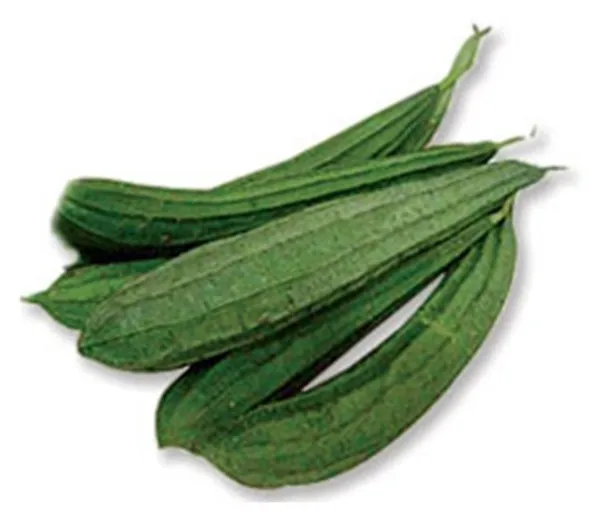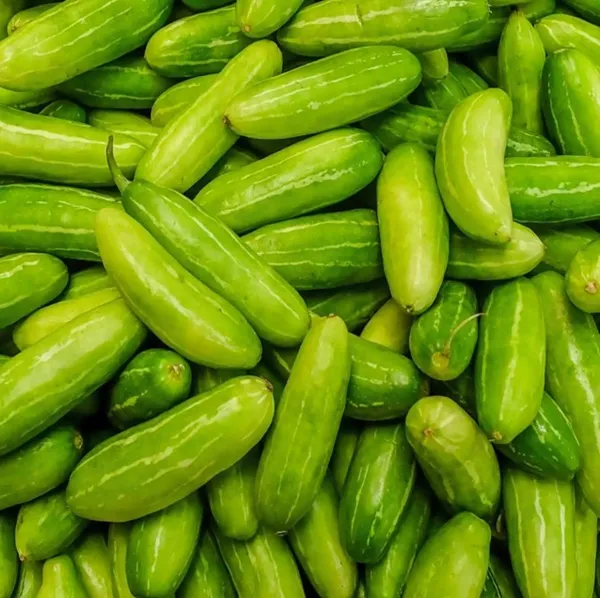Table of Contents
Absolutely! Let's dive deep into the world of snake gourd.
Snake Gourd: A Comprehensive Guide
Snake gourd (Trichosanthes cucumerina var. anguina) is a fascinating vegetable, known for its long, slender, often curved shape, resembling a snake. It's a member of the Cucurbitaceae family, which also includes cucumbers, melons, and squashes.1 This guide will explore its diverse aspects, from cultivation to culinary uses.
It is widely cultivated in tropical and subtropical regions, particularly in India, Southeast Asia, and parts of Africa, where it plays a significant role in traditional cuisine and medicine. The name "snake gourd" comes from its serpentine shape, as the vegetable can grow long and twisted, resembling a snake.
Botanical Characteristics
- Scientific Name: Trichosanthes cucumerina
- Common Names: Serpent gourd, Padwal (India), Chichinda (Hindi), Potlakaya (Telugu), Snake squash
- Growth Habit: A climbing vine that grows vigorously, often requiring support structures like trellises.
- Fruit Appearance: Long, slender, often curled, with a smooth or slightly textured green skin that turns red when ripe.
- Flowers: White, delicate, and fringed, blooming at night and attracting pollinators such as moths.
Global Varieties & Characteristics:
- Shape & Size:
- The most distinctive feature is its elongated, often twisted shape, ranging from 1 to 2 meters in length.
- Varieties differ in curvature, some being almost straight, while others are highly coiled.
- Color:
- Skin color varies from pale green to white with light green stripes.
- The flesh is white and spongy with flat, edible seeds when young.
- Global Distribution:
- Native to Southeast Asia, it's widely cultivated in India, China, Nepal, Bangladesh, and other tropical and subtropical regions.2
- It's also found in parts of Africa, Australia, and the Americas.3
Texture & Taste:
- Texture:
- Young snake gourds have a crisp, tender texture.
- Mature gourds become fibrous and less desirable.4
- Taste:
- Mild, slightly bitter, and refreshing, similar to zucchini or cucumber.
- The bitterness can be reduced by salting or blanching.
Nutrition & Health Benefits:
- Nutritional Profile:
- Low in calories and high in dietary fiber.5
- Rich in vitamins (A, B, C) and minerals (potassium, magnesium, phosphorus).6
- Contains antioxidants and anti-inflammatory compounds.7
- Health Benefits:
- Digestive Health: High fiber content aids digestion and prevents constipation.8
- Weight Management: Low calorie and high water content make it suitable for weight loss.9
- Blood Sugar Control: May help regulate blood sugar levels.10
- Detoxification: Possesses diuretic properties, helping to flush out toxins.11
- Immunity Boost: Vitamin C strengthens the immune system.12
- Anti-inflammatory: Helps to reduce inflamation.13
Allergies:
- While generally safe, some individuals may experience allergic reactions to snake gourd, manifesting as skin rashes, itching, or digestive issues.14
- It is best to try a small amount first when trying it for the first time.
Cultivation:
- Climate:
- Requires a warm, humid climate with temperatures between 25-35°C (77-95°F).
- Sensitive to frost.
- Soil:
- Well-drained, fertile soil rich in organic matter.
- pH range of 6.0-7.5 is ideal.
- Propagation:
- Grown from seeds.
- Seeds are sown after soaking for 12-24 hours.
- Pollination:
- Snake gourd is a cross-pollinated crop.
- Bees and other insects play a crucial role in pollination.
- Hand pollination can be used when needed.
- Support:
- Requires strong support structures (trellises, arbors) for its climbing vines.15
- Pests:
- Fruit flies, aphids, and spider mites can be problematic.16
- Fungal diseases like powdery mildew can also occur.17
- Return on Investment:
- Can be profitable with proper management and marketing.
- Factors affecting ROI include yield, market demand, and production costs.
Byproducts:
- Seeds: Can be dried and used as a source of oil or roasted and eaten.
- Vines & Leaves: Can be used as animal feed or compost.
- Mature Gourd Shells: Can be dried and used as containers or decorative items.
Safe Storage & Freezing:
- Storage:
- Fresh snake gourd can be stored in the refrigerator for up to a week.
- Wrap it in a paper towel or plastic bag to prevent moisture loss.
- Freezing:
- Cut into slices or cubes and blanch for 2-3 minutes.
- Cool quickly in ice water, drain, and pack into freezer bags.
- Frozen snake gourd can be stored for up to 6 months.
- Drying:
- Snake gourd can be dried in thin slices using a dehydrator, or in the sun.
- Dried snake gourd can be stored for long periods of time.
Usage in Cooking & Baking:
- Culinary Applications:
- Used in curries, stews, stir-fries, soups, and raitas.
- Can be stuffed, pickled, or made into fritters.
- Can be used in baked goods, such as breads, and cakes.
- Quick Recipes:
- Snake Gourd Stir-Fry: Sautéed with onions, garlic, ginger, and spices.
- Snake Gourd Curry: Cooked with coconut milk, tomatoes, and spices.
- Snake Gourd Raita: Grated and mixed with yogurt, cumin, and cilantro.
- Snake Gourd Soup: cooked in a vegetable broth with spices.18
- Curries, Sautees, Stir-fries, Soups:
- Snake gourd is very versatile, and can be added to most dishes that would contain Zucchini, or cucumber.
Major Producers, Exporters, & Importers:
- Major Producers: India, China, Bangladesh, Nepal, and Sri Lanka.
- Exporters: Primarily India and Southeast Asian countries.
- Importers: Countries with large South Asian populations, such as the United States, United Kingdom, and Canada.
Climate Conditions Needed for Cultivation and Pollination:
- Warm Climate: Snake gourd thrives in warm, tropical, and subtropical climates.19
- Humidity: High humidity is essential for optimal growth.
- Sunlight: Requires full sunlight for at least 6-8 hours per day.
- Pollination: The flowers rely on insects, especially bees, for pollination.
- High temperatures can decrease the amount of viable pollen.
Cultivation & Sustainability
Snake gourd is a fast-growing crop that thrives in warm climates with well-drained soil. Farmers and home gardeners cultivate it as a high-yielding, low-maintenance vegetable. It plays an essential role in sustainable farming due to its ability to grow in varied conditions and its minimal need for chemical inputs.









